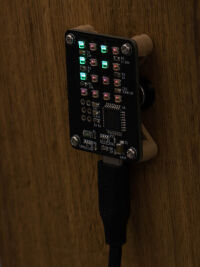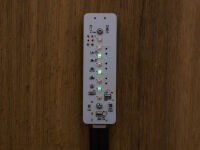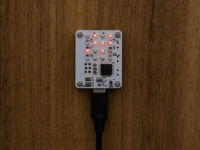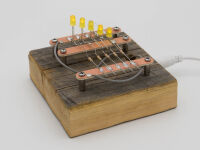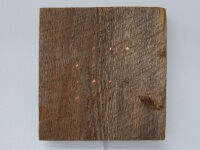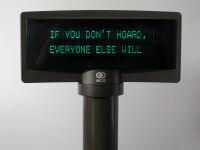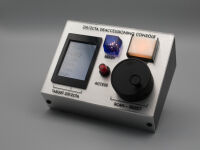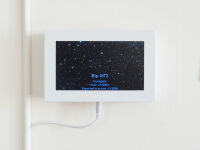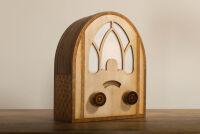What is it?
These sixteen lights show a binary number, increasing twice a second. When it fills up all the lights, about every 9 hours, 6 minutes, and 8 seconds, it resets and the colors change.
I think of these “bit counters” as a timepiece designed by computers, where we humans have to adapt to the most convenient method for the system, rather than the other way around.
They mark the passing of time in a less human-conforming way, quietly changing their environment; a season passing a few times over the course of a day.
The addition of a few extra lights makes a big difference in how long it takes to fill up:
| Number of lights (bits) | Number of ticks | Amount of time, at two ticks/second |
|---|---|---|
| 8 | 256 | 2 minutes, 8 seconds |
| 16 | 65536 | 9 hours, 6 minutes, 8 seconds |
| 24 | 16777216 | 13 weeks, 6 days, 2 hours, 10 minutes, 7 seconds |
| 32 | 4294967296 | 68 years, 2 weeks, 5 days, 3 hours, 14 minutes, 6 seconds |
It’s hard to imagine that a few extra lights could have such an impact. To me, this geometric increase speaks to the unintended complexities of any system of technology. A creator might think they’re just sprinkling in a new feature or two—but it’s not always possible to imagine the ramifications when they’re released into a wider system.
The larger the system, the larger the number of possible interactions; the peril, the promise.

